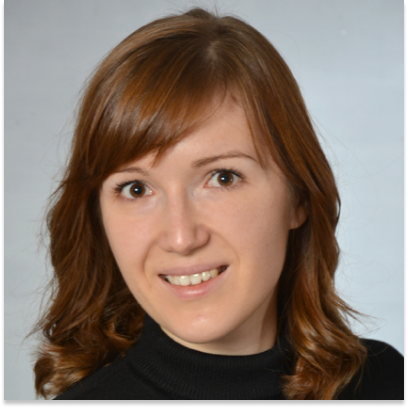Some time ago in a group chat of business analysts on Facebook I came across a discussion about Product Owner and Business Analyst roles in the project. Opinions were different and there was no clear answer. That inspired me to deep dive into the topic.
Who is the Product Owner and what’s his role?

Let’s reach out to the Scrum Guide to define the role of the Product Owner in a project.
Scrum is a framework that is now widely used in software product development. The foundation of Scrum is the Scrum Team, which consists of one Product Owner, one Scrum Master and a team of Developers.
The Product Owner is primarily responsible for maximizing the value of the product produced by the Scrum Team. How he does this may vary across organizations, teams, individuals, but in general he does it by:
- creating and clearly articulating the elements of the Product Backlog,
- prioritizing the elements of the Product Backlog to best achieve the objectives,
- optimizing the value delivered by the Scrum Team,
- ensuring transparency, visibility and understanding of what the Scrum Team will be working on next,
- ensuring that the Scrum Team understands the elements of the Product Backlog at a sufficient level.
The Product Owner is one person, not a committee. The Product Owner manages stakeholders’ expectations and involvement throughout the whole product development process.
And who is a Business Analyst and what’s his responsibility?

We, business analysts are often perceived primarily as connectors of IT and business. Our focus is understanding problems, needs of stakeholders, and recommending best solutions that bring value to them. We do it by performing business and system analysis tasks:
- communicating with stakeholders and asking “right” questions,
- conducting workshops and meetings with stakeholders,
- eliciting and managing requirements with focus on the most efficient way of value delivery,
- creating User Stories and required documentation,
- modeling business processes,
- helping developers refine Product Backlog elements and understand business requirements,
- keeping control over non-functional requirements.
There is no strict role for us in the Scrum Team. Our responsibilities are very dynamic and adjust according to the environment, organization we are working in and situation we’re dealing with.
Based on my experience there are 3 main configurations of the Business Analyst role in the project.
Business Analyst as Product Owner

Small product companies often choose such a setup. In this case Business Analyst performs the role of the Product Owner and becomes the single point of contact for all queries regarding the product. He is fully responsible for the product and how it’s developed. That’s the most popular configuration where Business Analyst in addition to his business analysis tasks is responsible for creating product strategy, developing actionable product roadmap, prioritizing elements of Product Backlog and making decisions about the product development.
Business Analyst as Scrum Team member

In this configuration Business Analyst performs his business analysis tasks. Additionally, thanks to his knowledge about business, processes and product, he is helping developers to understand requirements, groom Product Backlog elements and answer any questions that appear during the development cycle.
In this configuration Business Analyst is often also helping QAs with their tasks, i.e. by creating test cases or supporting UAT.
Full responsibility for the product development lies on Product Owner’s shoulders, Business Analyst only advises on the best solutions.
This configuration is often chosen by bigger product companies that have several development teams and Business Analyst is either dedicated to one of them or is working across teams.
Business Analyst as Proxy Product Owner

This model is typical for software houses where the Product Owner is on the client’s side. His availability to the Scrum Team is limited and his focus is on product strategy and roadmap. In this case all decisions regarding certain sprints are made by a Business Analyst that performs the role of a Proxy Product Owner. This is the most challenging model for the Business Analyst as he should not only perform his business analysis tasks, support development team and QAs, but also make key decisions, have impact on Backlog elements priority, ensure transparency and visibility of what team is doing in sprint.
Business Analyst as Scrum Master
It’s worth mentioning that there are some cases where Business Analyst can also perform the Scrum Master role as there are no clear limits on what Business Analyst can or can’t do. If the specialist has skills in addition to supervising the process and educating team members about Scrum, why not let him do it.
Where is the boundary between Product Owner and Business Analyst roles?
There is no one clear answer to this question.
As was stated above, the Product Owner is responsible for product value maximization. He may not always have technical background or know how to communicate with stakeholders on a detailed level, hence, Business Analyst must cover this gap.
Business Analysts are often professionals with some technical background that help them to
- easily communicate with developers,
- conduct Backlog Refinement meetings where product requirements are discussed at early stage and on a technical level,
- create SMART (specific, measurable, achievable, relevant, time-bounded) user stories that meet defined DoR (Definition of Ready) and DoD (Definition of Done).
Bearing that in mind and combining it with communication skills and UX knowledge, a Business Analyst is able to facilitate business requirements elicitation and maintain relations with stakeholders.
Boundary between Product Owner and Business Analyst is flexible and will adjust to the situation, type and size of the project or organization. This fact let’s Product Owner, Business Analyst, and the Scrum Team to cooperate closely and develop their skills.
Additionally, it’s very common for Business Analysts to transition to a Product Owner role. Based on IIBA research almost every third Business Analyst is considering this change.
References:
***
If you want to find out what the role of Agile Coach is, what he thinks about his Team Leader responsibilities or what the Resource Manager does, read our expert articles.
















Leave a comment